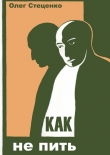
Текст книги "Миметика глупости"
Автор книги: А. Крупенин
Жанр:
Психология
сообщить о нарушении
Текущая страница: 17 (всего у книги 17 страниц)

Заключение
Итак, Вы отличаетесь от других людей. Вы отличаетесь от них наличием в Вашем мимноме мима, позволяющего переносить умения эффективной реализации неких определённых когнитивных мимов для эффективной реализации других мимов, как когнитивных, так и социальных. Обладание вышеуказанным мимом переноса позволяет Вам проанализировать усвоенную Вами систему ценностей и желаний и привести её в соответствие с реалиями окружающей материальной и социальной действительности.
Обладание мимом переноса позволяет как бы чётче видеть окружающий мир. И Вы видите, что большинство людей (практически все люди) отличается от Вас, что они-то как раз и неспособны совершить проделанный Вами анализ собственных ценностей и желаний. Что эти люди могут успешно реализовывать мимы только в одной, узкой области. Вы видите, что во всех других областях эти люди глупы. Вы делаете открытие о парциальной глупости населения Земли.
Возможно, это открытие и не сильно облегчает Вам жизнь, но теперь, по крайней мере, Вы знаете, с кем Вы, в основном, имеете дело и на что Вы можете рассчитывать…

Библиография
•Bazerman, M. (2001). Consumer research for consumers. Journal of Consumer Research, 27, 499-504.
•Bettelheim, Bruno. Aufstand gegen die Masse. Die Chance des Individuums in der modernen Gesellschaft. Kindler, 1980.
•Blackmore, Susen. The Meme Machine. Oxford University Press, 1999.
•Barrett, Deirdre. Supernormal Stimuli. W.W.Norton & Company, Inc., NY, 2010.
•Call, J. and Tomasello, M. (1995). Use of social information in the problem solving of orangutans (Pongo pygmaeus) and human children (Homo sapiens). Journal of Comparative Psychology, 109, 308–20.
•Camerer, Colin and colleagues, University of Pennsylvania Law Review, 2003
•Carroll, J. B. Human cognitive abilities: A survey of factor-analytic studies. Cambridge: Cambridge University Press. 1993.
•Cosmides and Tooby 1994. Beyond intuition and instinct blindness: Toward an evolutionarily rigorous cognitive science. Cognition 50:41–77.
•Crick, Francis. The Astonishing Hypothesis: The Scientific Search for the Soul, 1994, р.3
•Csikszentmihalyi, Mihaly. Flow: The Psychology of Optimal Experience. New York: Harper and Row, 1990
•Csikszentmihalyi, Mihaly. Creativity : Flow and the Psychology of Discovery and Invention. New York: Harper Perennial, 1996
<
•Csikszentmihalyi, Mihaly. Good Business: Leadership, Flow, and the Making of Meaning. Basic Books, Inc. 2003
•Dawes, R. M. Rational choice in an uncertain world. San Diego, CA: Harcourt Brace Jovanovich, 1988
•Dennett, Daniel C.. Consciousness explained. Back Bay Books/Little, Brown and Company New York, 1991
•Dennett, Daniel C., Darwin's dangerous idea. Penguin Books. London, 1995.
•Doherty, M. E., & Mynatt, C. (1990). Inattention to P(H) and to P(D/~H): A converging operation. Acta Psychologica, 75, 1-11.
•Dawkins, R., The selfish gene. 1976. New ed., 1989. New York: Oxford University Press
•Epley, N. (2008, January 31). Rebate psychology. The New York Times, A27.
•Epley, N., Mak, D., & Chen Idson, L. (2006). Bonus or rebate? The impact of income framing on spending and saving. Journal of Behavioral Decision Making, 19, 213-227.
•Gardner, M. (1973, July). Free will revisited, with a mind-bending prediction paradox by William Newcomb. Scientific American, Vol. 229, No. 1, pp. 104–108.
•Gardner, M. (1974, March). Reflections on Newcomb’s problem: a prediction and free-will dilemma. Scientific American, Vol. 230, No. 3, pp. 102–109.
•Groopman, J. How doctors think. Boston: Houghton Mifflin, 2007.
•Hardin, G. (1968). The tragedy of the commons. Science, 162, 1243-1248.
•Henslin, J.M. (1967) Craps and magic. American Journal of Sociology, 73, 316-320.
•Heyes, C.M. and Galef, B.G. (ed.) (1996). Social Learning in Animals: The Roots of Culture. San Diego, CA, Academic Press.
•Hofstadter, D. R. Metamagical themas: Questing for the essence of mind and pattern. New York: Basic Books. 1985
•Horn, J. L., & Cattell, R. B. 1967. Age differences in fluid and crystallized intelligence. Acta Psychologica, 26,1-23.
•Horn, J. L., & Noll, J. 1997. Human cognitive capabilities: Gf-Gc theory. In D.Flanagan, J. Genshaft, & P. Harrison (Eds.), Contemporary intellectual assessment: Theories, tests, and issues (53-91). NewYork: Guilford Press.
•Johnson, E.J., Hershey, J., Meszaros, J., and Kunreuther, H. Framing, probability distortions, and insurance decisions. In Choices, values, and frames, ed. D. Kahneman and A. Tversky, 224–40. Cambridge: Cambridge University Press 2000.
•Judgment under Uncertainty:Heuristics and biases. Edited by Daniel Kahneman, Paul Slovic, Amos Tversky. Cambridge University Press, 2001
•Kahneman, D., & Frederick, S. Representativeness revisited: Attribute substitution in intuitive judgment. In T. Gilovich, D. Griffin, & D. Kahneman (Eds.), Heuristics and biases: The psychology ofintuitive judgment (49-81). New York: Cambridge University Press, 2002
•Kahneman, D. (2003). A perspective on judgment and choice: Mapping bounded rationality. American Psychologist, 58, 697-720.
•Kahneman, Daniel. Thinking fast and slow. Farrar, Straus and Giroux New York 2011
•Libet, Benjamin. Unconscious cerebral initiative and the role of conscious will in voluntary action, 1985, Behavioral and Brain sciences, 8. 529–39. (With commentaries 539–66; and BBS, 10, 318–21.
•Lichtenstein, S., & Slovic, P. (Ed.). The construction of preference.Cambridge: Cambridge University Press. 2006.
•McNeil, B., Pauker, S., Sox, H., & Tversky, A. (1982). On the elicitation of preferences for alternative therapies. New England Journal ofMedicine, 306, 1259-1262.
•Medin, D. L., & Bazerman, M. H. (1999). Broadening behavioral decision research: Multiple levels of cognitive processing. Psychonomic Bulletin & Review, 6, 533-546.
•Mynatt, C. R., Doherty, M. E., & Dragan, W (1993). Information relevance, working memory, and the consideration of alternatives. Quarterly Journal of Experimental Psychology, 46A, 759-778.
•Neuman, John von and Morgenstern, Oskar, Theory of Games and Economic Behavior . Princeton, NJ. Princeton University Press, 1944.
•Nile // Encylopedia of Britannica, vol. 16, London, 1958, рр.448-455
•North, A.C., Hargreaves, D.J., McKendrick J., (1999). The influence of in-store music on wine selections. Journal of Applied Psychology, 84, 271-276.)
•North A. C. (2012) The effect of background music on the taste of wine. British Journal of Psychology, 103: 293–301.
•Nozick, R. Newcomb’s problem and two principles of choice. In Nicholas Rescher (Ed.), Essays in honor of Carl G. Hempel. Dordrecht: Reidel. 1969.
•Nozick, Robert. The nature of rationality. Princeton, N.J.: Princeton University Press, 1993.
•Petry, N. M. Pathological gambling: Etiology, comorbidity, and treatment. Washington, DC: American Psychological Association. 2005.
•Pinker, S. How the mind works. New York: Norton, 1997.
•Pinker , S. The Language Instinct. New York, Morrow, 1994.
•Possemyer, Ines. Mythos Blut. GEO, November 1997, №11.
•Quattrone, G. A., & Tversky, A. (1984). Causal versus diagnostic contingencies: On self-deception and on the voter’s illusion. Journal of Personality and Social Psychology, 46(2), 237–248.
•Redelmeier, D. A., & Shafir, E. (1995). Medical decision making in situations that offer multiple alternatives. JAMA, 273, 302-305.
•Rozin, P., L. Millman, and C. Nemeroff. 1986. Operation of the laws of sympathetic magic in disgust and other domains. Journal of Personality and Social Psychology 50:703–12.
•Searle, J. R. The rationality of action. Cambridge, MA: MIT Press. 2001.
•Shafir, E. (1994). Uncertainty and the difficulty of thinking through disjunctions. Cognition, 50, 403-430.
•Sinaceur, M., Heath, C., & Cole, S. (2005). Emotional and deliberative reactions to a public crisis: Mad cow disease in France. Psychological Science, 16, 247-254.
•Stanovich, K. E., & West, R. E (1999). Discrepancies between normative and descriptive Models of decision making and the understanding / acceptance principle. Cognitive Psychology, 38, 349-385.
•Stanovich, Keith E. The Robots Rebellion The University of Chicago Press, Ltd., London 2004
•Stanovich, Keith E. What Intelligence Tests Miss: The Psychology of Rational Thought Yale University Press New Haven and London 2009
•Stanovich, Keith E. Decision Making and Rationality in the Modern World New York Oxford Oxford University Press 2010
•Stanovich, Keith E. Rationality and the Reflective Mind New York: Oxford University Press, 2011
•Stanovich, Keith E. How to Think Straight About Psychology Upper Saddle River, N. J. Pearson Education, 2013
•Stanovich, Keith E. Why humans are (sometimes) less rational than other animals: Cognitive complexity and the axioms of rational choice Thinking & Reasoning, 2013 Vol. 19, No. 1, 1–26, http://dx.doi.org/10.1080/13546783.2012.713178
•Todd, P. M., & Gigerenzer, G. (2007). Environments that make us smart: Ecological rationality. Current Directions in Psychological Science, 16, 167-171.
•Tomasello, M., Kruger, A.C. and Ratner, H.H. (1993). Cultural learning. Behavioral and Brain Sciences, 16, 495–552.
•Tversky, A., & Kahneman, D. (1981). The framing of decisions and the psychology of choice. Science, 211, 453-458.
•Tversky, A., & Kahneman, D. Evidential impact of base rates. In D. Kahneman, P. Slovic, & A. Tversky (Eds.), Judgment under uncertainty: Heuristics and biases (pp. 153-160). Cambridge: Cambridge University Press. 1982.
•Tversky, A., & Shafir, E. Thinking through Uncertainty: Nonconsequential Reasoning and Choice. In A.Tversky, E.Shafir, (Eds.), Preference, Belief, and Similarity. A Bradford Book, The MIT Press, Cambridge, Massachusetts, London, England. 2004.
•Tversky, A., & Shafir, E. (1992). The disjunction effect in choice under uncertainty. Psychological Science, 3, 305-309.
•Tversky, A., Slovic, P., & Kahneman, D. (1990). The causes of preference reversal. American Economic Review, 80, 204-217.
•Wilson, T. D. Strangers to ourselves. Cambridge, MA: Harvard University Press, 2002.
•Крупенин А.Л., Крохина И.М., Эффективный учитель. Ростов-на-Дону, Феникс, 1995, CCL, 2008.
•Крупенин А.Л., Крохина И.М., Трудно быть принцем. Smashwords, 2015.
•Куценков П. А., Эволюционная патопсихология (перелистывая книгу Б. Ф. Поршнева «О начале человеческой истории») Историческая психология и социология истории 2/2008, с.180–197.
•Поршнев Б.Ф., Социальная психология и история, М.: Наука, 1979.
•Поршнев Б.Ф., О начале человеческой истории (Проблемы палеопсихологии). СПб.: Алетейя, 2007.
•Серая Сова. Рассказы опустевшей хижины. М.: Молодая гвардия, 1974.
•Тунгусска. 95 лет назад. Знание-Сила, 2003, 6, с.31-32.
•Тунгусский метеорит. https://ru.wikipedia.org/wiki/Тунгусский_метеорит
Крупенин А.Л., Крохина И.М.

Миметика глупости



![Книга За ш[т]орами автора Галина Шаульская](http://itexts.net/files/books/110/oblozhka-knigi-za-shtorami-351885.jpg)




